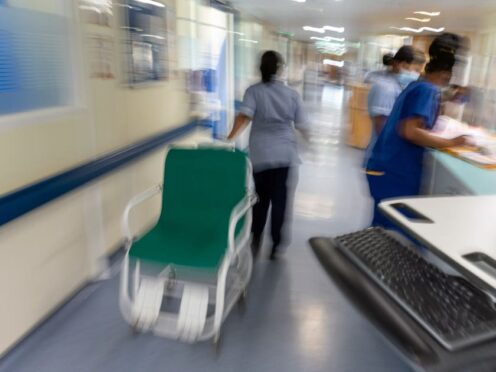Fewer patients suffered long waits at Scotland’s accident and emergency departments – with the latest waiting times figures revealing the best performance for six months.
Of the 25,423 people who went to A&E for help in the week ending April 21, a total of 65.8% were either admitted, transferred or discharged within the target time of four hours.
That is the best overall performance for A&E waiting times since the week ending October 15 last year, when two thirds (66%) of patients were dealt with inside this time.
But it continues to be significantly below the Scottish Government target of having 95% of all patients in A&E admitted, transferred or discharged inside four hours.
According to the latest data, published by Public Health Scotland, a total of 8,825 patients spent longer than four hours in A&E in the week ending April 21, with this down from 9,131 the previous week.
There were 2,976 patients who were there for eight hours or more, again down from 3,111 the previous week.
Meanwhile, 1,281 patients spent at last half a day in the emergency department, with this compared to 1,342 people having such waits in the previous seven days.
Only one health board met the waiting times target in the week ending April 21, with NHS Western Isles seeing 97.6% of all patients in A&E admitted, transferred or discharged within four hours.
Meanwhile in NHS Forth Valley fewer than half (45%) of emergency department patients were dealt with within this time.
Despite the improvement, Scottish Conservative health spokesperson Dr Sandesh Gulhane said that “A&E waiting times remain at utterly appalling levels due to SNP inaction”.
The Tory hit out: “It is the shocking norm that over a third of patients are expected to suffer delays of over four hours, and that over 1,000 people are still waiting half a day to be seen.
“These figures are what we’ve become used to at the height of winter, not at this time, and we know they will have led to tragic and needless loss of life.”
He insisted Scotland’s next first minister “must urgently make cutting A&E waiting times a priority”.
Health Secretary Neil Gray responded: “Health services continue to experience sustained pressure and waiting times are longer than we want them to be for too many patients.
“We continue to work collaboratively with health boards to develop services, support sustained improvement and reduce A&E waits”
He added he was “pleased to see continued improvements in performance this week with further decreases in the number of patients waiting longer than 8 and 12 hours” with Mr Gray saying totals had fallen despite an overall increase in the number of patients attending at A&E.
Mr Gray continued: “The 2024-25 Scottish Budget provides more than £19.5 billion for health and social care and an extra £500 million for frontline boards.
“An initial investment of £30 million in the NHS, the first instalment of a £300 million investment over three years, will target reductions to pandemic backlogs and patients waiting the longest time.”
